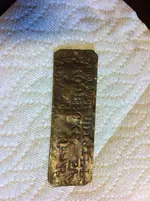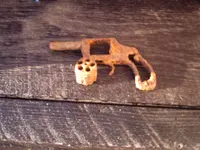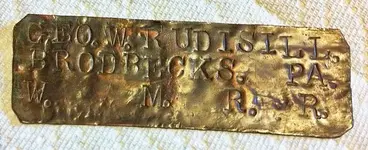- Joined
- Apr 24, 2010
- Messages
- 12,919
- Reaction score
- 27,640
- Golden Thread
- 1
- Location
- Upper Canada 🇨🇦
- 🥇 Banner finds
- 1
- 🏆 Honorable Mentions:
- 3
- Detector(s) used
- XP Deus, Lesche Piranha 35 Shovel & 'Garrett Carrot'
- Primary Interest:
- Relic Hunting
I was definitely kept busy this past long weekend, with doing research and detecting that is!  Oh, I still managed to get my weekend chores done, but thankfully my wife understands how passionate I am about my hobby. I detected four separate sites and I apologize in advance for the amount of photo’s and information included in my post.
Oh, I still managed to get my weekend chores done, but thankfully my wife understands how passionate I am about my hobby. I detected four separate sites and I apologize in advance for the amount of photo’s and information included in my post.  I found very little dating evidence in the way of porcelain or glass on any of these sites. The common 'white' porcelain frags always pop up, but as you all know, unless there's a maker’s maker or a potion of a transfer print visible, they're relatively difficult to date.
I found very little dating evidence in the way of porcelain or glass on any of these sites. The common 'white' porcelain frags always pop up, but as you all know, unless there's a maker’s maker or a potion of a transfer print visible, they're relatively difficult to date. 
The first site originally had 3 homesteads and a railway line running through it. The site had recently been scraped in preparation for yet another commercial strip mall. My first find was an 1853 US Seated Half Dime, followed by the N.Y.C.R.R. Tag. The Deus makes the silvers, brass and coppers literally jump into my headphones. I detect without discrimination and the site where I found the baggage tag and the US Seated at is just chocked full of nails and iron signals. The only way I found these items was to slow my swing way down. I’m not sure what SUS. BDG. stands for, but I’ve sent of pics to a railroad expert and will let you know what he comes back with. In researching the N.Y.C.R.R., I found info on the Niagara Falls Suspension Bridge between the US & Canada. But I’m having trouble getting my head around the thought of needing a specific baggage tag to take the train across a bridge.
The second site was a c1865 one room school site that I first detected last fall. The finds here are getting scarce, but I noticed the gardens had recently been cut back so I started there. My first find here was the WW II General Service cuff button, followed by an early War Amps key tag. I can’t quite make out the exact year of the license plate, but it looks to be from 1958.
The third site was an abandoned WW II RCAF training site. Sorry about the poor quality of the photo, but it was the only online evidence I could find of this sites existence. Other then a few bullet casings, finds were scarce here, thankfully finding the Daisy Cap Gun made it worth telling you about this hunt. If I look closely, I can see 'wear marks' on the sides of the gun where it was drawn in and out of the holster by it's former owner. I can only imagine the feeling of devastation the little guy must've felt when he arrived home, only to realize that he'd lost his favourite toy.
The fourth site I hit this weekend was an old homestead site that I have been waiting for the hay to be cut on. Unfortunately, I’ve now come to realize the front portion this site must’ve been removed when the road was widened and improved some time in the 20thc. The iron spread on this site only covers an area of about 100’ x 100’, so I feel fortunate to have found what I have here. My first find was an 1844 Bank of Canada Half Penny, followed by the ‘front portion’ of a brass barrel tap, I had found the ‘back portion’ of this tap on an earlier trip here. To-date I’ve found 5 tokens & 5 buttons here… my heart sinks when I think about what must’ve been lost during the road construction.
Seated Liberty Half Dime - 1853 with Arrows
“When James Marshall discovered a few nuggets of gold on the American River in northern California in 1848 no one could have predicted just how much precious metal lay waiting to be found and how widespread the effects of his discovery really would be. But gold soon flooded the monetary markets of the world, and this overabundance of the metal caused its price to fall, which in turn had the effect of raising the price of silver as reckoned in gold dollars. As the price of silver rose relative to gold, the intrinsic value of United States silver coins increased above their face value. Soon, U.S. silver coins were melted when found, and by 1851 they were no longer found. This lack of fractional silver coinage created chaos among merchants and bankers who were forced to make change with-silver three-cent pieces, heavily worn dimes and half dimes and the ubiquitous Spanish silver pieces. As the voice of the people, Congress quickly responded to the complaints of the merchant class, and bills were introduced and fiercely debated for two years before action was finally taken to solve the problem. More than 13 million Arrows half dimes were struck in Philadelphia in 1853, more than half the total output of 25,060,020 for the three years that arrows were used. Only Philadelphia and New Orleans produced this sub-type, and the New Orleans pieces are significantly scarcer than their Philadelphia counterparts.”
New York Central Railroad
“The railway was first formed in 1853 following the merger and consolidation of a number of small regional railways operating between Buffalo and Schenectady in upstate New York. From 1853 to 1867, the railway was owned and operated by Erastus Corning, a businessman and politician. In 1867 the railway was acquired by Cornelius Vanderbilt and merged with the Hudson River Railroad to become the New York Central and Hudson River Railroad. At its height, the NYC covered most of the northeast United States and extended as far south as St. Louis. The railway provided service to a large portion of southern Ontario and Quebec including several major Canadian cities such as Montreal, Ottawa and Toronto. Although the New York Central Railroad (NYC) was an American entity, it maintained a dominating presence in southern Ontario for many years.”
War Amps Key Tag Service launched in 1946
"The Key Tag Service debuted in 1946, creating jobs for war amputees in the sheltered workshop and generating funds for the Association by providing a valuable service to Canadians. This service was a popular venture from the start. It not only served as a revenue stream to support the Association’s activities but also helped raise the profile of The War Amps with the public. In the beginning, the key tags were made by hand and looked like miniature license plates. Within a few months of operation, more than 70 sets of keys were found and returned by mail. Today, The War Amps has returned more than 1.5 million sets of lost keys to their owners and the Key Tag Service remains a sheltered workshop, employing amputees and people with disabilities."
Thanks very much for looking!
Dave
UPDATE - Response from Mark Parker @ Western Eastern Treasures Magazine
Hi, David—
"SUS.BDG." on the New York Central Railroad baggage tag that you found stands for "Suspension Bridge," namely, the railroad suspension bridge between the U.S. and Canada at Niagara Falls. The bridge was in use from about 1855 to 1897. Although the tag does not appear to be maker-marked, I have seen other tags of the same unusual, bilobate shape that date c. 1850's-60's. So far I've had no luck locating a sales listing for a similar tag, but I'd say the price is easily into three digits. W&ET has forwarded the photos to Sue Knous, a specialist in railroad items of this kind, and when/if we hear from her, I'll be sure to let you know.
By the way, since you provided your name and location, I'm assuming that it's okay to include that information if this item is featured in a future issue. However, if you'd prefer that it be published anonymously, just let me know. Either way, thanks for sending it in!
All the best,
Mark
P.S. Here's how the bridge looked around the time that the tag would likely have been in use. Note that the train is above the carriages and pedestrians— an arrangement which author Mark Twain, after crossing the bridge, described as follows: See last picture in this first thread.
"Then you drive over to Suspension Bridge and divide your misery between the chances of smashing down two-hundred feet into the river below, and the chances of having a railway-train overhead smashing down onto you. Either possibility is discomforting taken by itself, but, mixed together, they amount in the aggregate to positive unhappiness." - Mark Twain
 Oh, I still managed to get my weekend chores done, but thankfully my wife understands how passionate I am about my hobby. I detected four separate sites and I apologize in advance for the amount of photo’s and information included in my post.
Oh, I still managed to get my weekend chores done, but thankfully my wife understands how passionate I am about my hobby. I detected four separate sites and I apologize in advance for the amount of photo’s and information included in my post.  I found very little dating evidence in the way of porcelain or glass on any of these sites. The common 'white' porcelain frags always pop up, but as you all know, unless there's a maker’s maker or a potion of a transfer print visible, they're relatively difficult to date.
I found very little dating evidence in the way of porcelain or glass on any of these sites. The common 'white' porcelain frags always pop up, but as you all know, unless there's a maker’s maker or a potion of a transfer print visible, they're relatively difficult to date. The first site originally had 3 homesteads and a railway line running through it. The site had recently been scraped in preparation for yet another commercial strip mall. My first find was an 1853 US Seated Half Dime, followed by the N.Y.C.R.R. Tag. The Deus makes the silvers, brass and coppers literally jump into my headphones. I detect without discrimination and the site where I found the baggage tag and the US Seated at is just chocked full of nails and iron signals. The only way I found these items was to slow my swing way down. I’m not sure what SUS. BDG. stands for, but I’ve sent of pics to a railroad expert and will let you know what he comes back with. In researching the N.Y.C.R.R., I found info on the Niagara Falls Suspension Bridge between the US & Canada. But I’m having trouble getting my head around the thought of needing a specific baggage tag to take the train across a bridge.
The second site was a c1865 one room school site that I first detected last fall. The finds here are getting scarce, but I noticed the gardens had recently been cut back so I started there. My first find here was the WW II General Service cuff button, followed by an early War Amps key tag. I can’t quite make out the exact year of the license plate, but it looks to be from 1958.
The third site was an abandoned WW II RCAF training site. Sorry about the poor quality of the photo, but it was the only online evidence I could find of this sites existence. Other then a few bullet casings, finds were scarce here, thankfully finding the Daisy Cap Gun made it worth telling you about this hunt. If I look closely, I can see 'wear marks' on the sides of the gun where it was drawn in and out of the holster by it's former owner. I can only imagine the feeling of devastation the little guy must've felt when he arrived home, only to realize that he'd lost his favourite toy.
The fourth site I hit this weekend was an old homestead site that I have been waiting for the hay to be cut on. Unfortunately, I’ve now come to realize the front portion this site must’ve been removed when the road was widened and improved some time in the 20thc. The iron spread on this site only covers an area of about 100’ x 100’, so I feel fortunate to have found what I have here. My first find was an 1844 Bank of Canada Half Penny, followed by the ‘front portion’ of a brass barrel tap, I had found the ‘back portion’ of this tap on an earlier trip here. To-date I’ve found 5 tokens & 5 buttons here… my heart sinks when I think about what must’ve been lost during the road construction.
Seated Liberty Half Dime - 1853 with Arrows
“When James Marshall discovered a few nuggets of gold on the American River in northern California in 1848 no one could have predicted just how much precious metal lay waiting to be found and how widespread the effects of his discovery really would be. But gold soon flooded the monetary markets of the world, and this overabundance of the metal caused its price to fall, which in turn had the effect of raising the price of silver as reckoned in gold dollars. As the price of silver rose relative to gold, the intrinsic value of United States silver coins increased above their face value. Soon, U.S. silver coins were melted when found, and by 1851 they were no longer found. This lack of fractional silver coinage created chaos among merchants and bankers who were forced to make change with-silver three-cent pieces, heavily worn dimes and half dimes and the ubiquitous Spanish silver pieces. As the voice of the people, Congress quickly responded to the complaints of the merchant class, and bills were introduced and fiercely debated for two years before action was finally taken to solve the problem. More than 13 million Arrows half dimes were struck in Philadelphia in 1853, more than half the total output of 25,060,020 for the three years that arrows were used. Only Philadelphia and New Orleans produced this sub-type, and the New Orleans pieces are significantly scarcer than their Philadelphia counterparts.”
New York Central Railroad
“The railway was first formed in 1853 following the merger and consolidation of a number of small regional railways operating between Buffalo and Schenectady in upstate New York. From 1853 to 1867, the railway was owned and operated by Erastus Corning, a businessman and politician. In 1867 the railway was acquired by Cornelius Vanderbilt and merged with the Hudson River Railroad to become the New York Central and Hudson River Railroad. At its height, the NYC covered most of the northeast United States and extended as far south as St. Louis. The railway provided service to a large portion of southern Ontario and Quebec including several major Canadian cities such as Montreal, Ottawa and Toronto. Although the New York Central Railroad (NYC) was an American entity, it maintained a dominating presence in southern Ontario for many years.”
War Amps Key Tag Service launched in 1946
"The Key Tag Service debuted in 1946, creating jobs for war amputees in the sheltered workshop and generating funds for the Association by providing a valuable service to Canadians. This service was a popular venture from the start. It not only served as a revenue stream to support the Association’s activities but also helped raise the profile of The War Amps with the public. In the beginning, the key tags were made by hand and looked like miniature license plates. Within a few months of operation, more than 70 sets of keys were found and returned by mail. Today, The War Amps has returned more than 1.5 million sets of lost keys to their owners and the Key Tag Service remains a sheltered workshop, employing amputees and people with disabilities."
Thanks very much for looking!

Dave
UPDATE - Response from Mark Parker @ Western Eastern Treasures Magazine
Hi, David—
"SUS.BDG." on the New York Central Railroad baggage tag that you found stands for "Suspension Bridge," namely, the railroad suspension bridge between the U.S. and Canada at Niagara Falls. The bridge was in use from about 1855 to 1897. Although the tag does not appear to be maker-marked, I have seen other tags of the same unusual, bilobate shape that date c. 1850's-60's. So far I've had no luck locating a sales listing for a similar tag, but I'd say the price is easily into three digits. W&ET has forwarded the photos to Sue Knous, a specialist in railroad items of this kind, and when/if we hear from her, I'll be sure to let you know.
By the way, since you provided your name and location, I'm assuming that it's okay to include that information if this item is featured in a future issue. However, if you'd prefer that it be published anonymously, just let me know. Either way, thanks for sending it in!
All the best,
Mark
P.S. Here's how the bridge looked around the time that the tag would likely have been in use. Note that the train is above the carriages and pedestrians— an arrangement which author Mark Twain, after crossing the bridge, described as follows: See last picture in this first thread.
"Then you drive over to Suspension Bridge and divide your misery between the chances of smashing down two-hundred feet into the river below, and the chances of having a railway-train overhead smashing down onto you. Either possibility is discomforting taken by itself, but, mixed together, they amount in the aggregate to positive unhappiness." - Mark Twain
Attachments
-
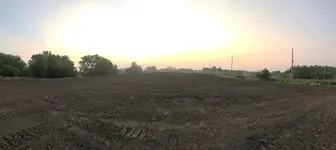 WP_20180701_05_58_01_Panorama.webp107.4 KB · Views: 139
WP_20180701_05_58_01_Panorama.webp107.4 KB · Views: 139 -
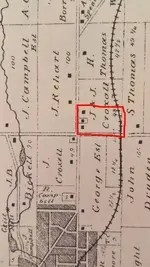 WP_20180701_19_53_52_Pro (2).webp98.5 KB · Views: 110
WP_20180701_19_53_52_Pro (2).webp98.5 KB · Views: 110 -
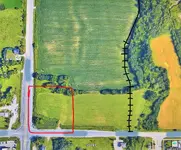 WP_20180701_20_26_45_Pro (2).webp360.4 KB · Views: 131
WP_20180701_20_26_45_Pro (2).webp360.4 KB · Views: 131 -
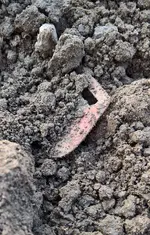 WP_20180701_06_40_05_Pro (2).webp326.3 KB · Views: 114
WP_20180701_06_40_05_Pro (2).webp326.3 KB · Views: 114 -
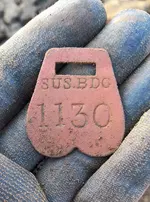 WP_20180701_06_41_16_Pro (2).webp290.9 KB · Views: 136
WP_20180701_06_41_16_Pro (2).webp290.9 KB · Views: 136 -
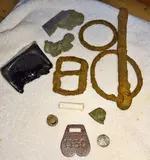 WP_20180702_20_18_24_Pro (2).webp288.7 KB · Views: 120
WP_20180702_20_18_24_Pro (2).webp288.7 KB · Views: 120 -
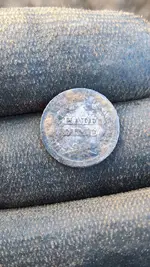 WP_20180701_06_12_34_Pro (2).webp212.8 KB · Views: 119
WP_20180701_06_12_34_Pro (2).webp212.8 KB · Views: 119 -
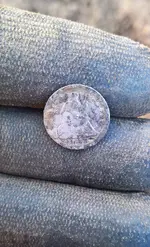 WP_20180701_06_12_49_Pro (2)-crop.webp260.7 KB · Views: 133
WP_20180701_06_12_49_Pro (2)-crop.webp260.7 KB · Views: 133 -
 WP_20180701_06_10_52_Pro (2).webp159.9 KB · Views: 130
WP_20180701_06_10_52_Pro (2).webp159.9 KB · Views: 130 -
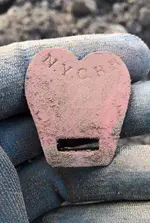 WP_20180701_06_41_28_Pro (2).webp248 KB · Views: 114
WP_20180701_06_41_28_Pro (2).webp248 KB · Views: 114 -
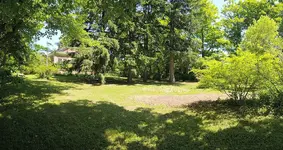 WP_20180629_12_12_35_Panorama.webp349.9 KB · Views: 106
WP_20180629_12_12_35_Panorama.webp349.9 KB · Views: 106 -
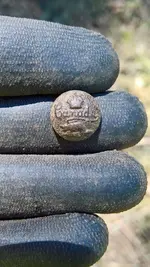 WP_20180629_11_14_51_Pro (2).webp242.7 KB · Views: 149
WP_20180629_11_14_51_Pro (2).webp242.7 KB · Views: 149 -
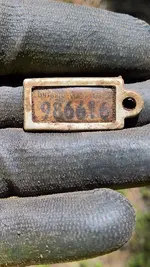 WP_20180629_11_36_29_Pro (2).webp277.6 KB · Views: 134
WP_20180629_11_36_29_Pro (2).webp277.6 KB · Views: 134 -
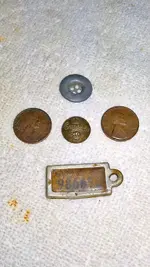 WP_20180702_20_13_21_Pro (2).webp150.5 KB · Views: 114
WP_20180702_20_13_21_Pro (2).webp150.5 KB · Views: 114 -
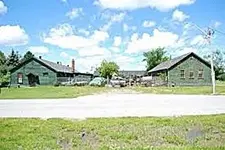 images.webp17.7 KB · Views: 533
images.webp17.7 KB · Views: 533 -
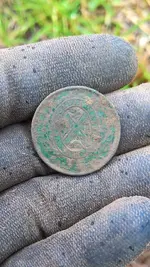 WP_20180627_16_13_57_Pro (2).webp257.8 KB · Views: 119
WP_20180627_16_13_57_Pro (2).webp257.8 KB · Views: 119 -
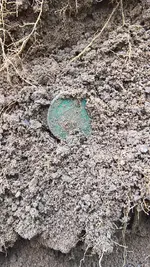 WP_20180627_16_12_47_Pro (2).webp388.4 KB · Views: 117
WP_20180627_16_12_47_Pro (2).webp388.4 KB · Views: 117 -
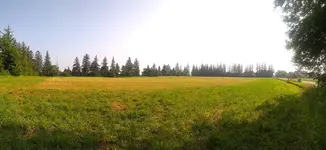 WP_20180701_09_06_31_Panorama.webp162.3 KB · Views: 109
WP_20180701_09_06_31_Panorama.webp162.3 KB · Views: 109 -
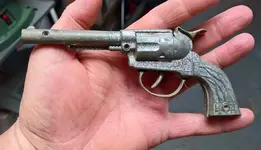 WP_20180702_22_06_36_Pro (2).webp103.7 KB · Views: 114
WP_20180702_22_06_36_Pro (2).webp103.7 KB · Views: 114 -
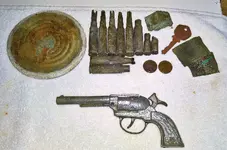 WP_20180702_20_25_39_Pro (2).webp261.3 KB · Views: 126
WP_20180702_20_25_39_Pro (2).webp261.3 KB · Views: 126 -
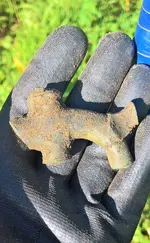 WP_20180629_08_37_30_Pro (2).webp292.2 KB · Views: 102
WP_20180629_08_37_30_Pro (2).webp292.2 KB · Views: 102 -
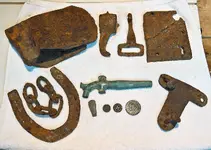 WP_20180702_20_32_07_Pro (2).webp204.4 KB · Views: 116
WP_20180702_20_32_07_Pro (2).webp204.4 KB · Views: 116 -
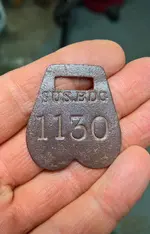 WP_20180702_20_18_50_Pro (2).webp150.4 KB · Views: 123
WP_20180702_20_18_50_Pro (2).webp150.4 KB · Views: 123 -
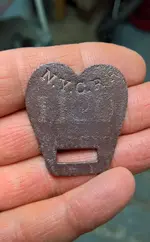 WP_20180702_20_19_06_Pro (2).webp130.9 KB · Views: 111
WP_20180702_20_19_06_Pro (2).webp130.9 KB · Views: 111 -
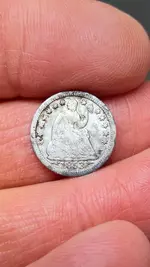 WP_20180702_20_20_18_Pro (2).webp105.8 KB · Views: 122
WP_20180702_20_20_18_Pro (2).webp105.8 KB · Views: 122 -
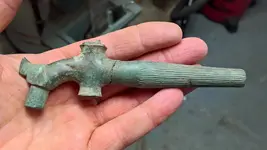 WP_20180702_20_34_18_Pro (2).webp82.1 KB · Views: 111
WP_20180702_20_34_18_Pro (2).webp82.1 KB · Views: 111 -
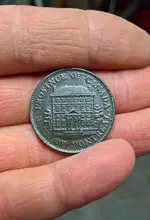 WP_20180702_20_33_47_Pro (2).webp130.9 KB · Views: 112
WP_20180702_20_33_47_Pro (2).webp130.9 KB · Views: 112 -
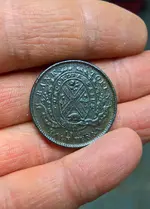 WP_20180702_20_33_24_Pro (2).webp157 KB · Views: 119
WP_20180702_20_33_24_Pro (2).webp157 KB · Views: 119 -
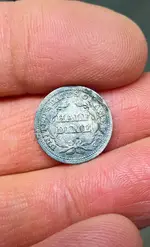 WP_20180702_20_20_35_Pro (3).webp135.6 KB · Views: 119
WP_20180702_20_20_35_Pro (3).webp135.6 KB · Views: 119 -
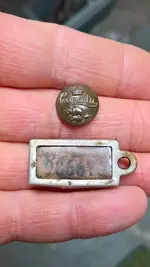 WP_20180702_20_17_45_Pro (2).webp78.2 KB · Views: 104
WP_20180702_20_17_45_Pro (2).webp78.2 KB · Views: 104 -
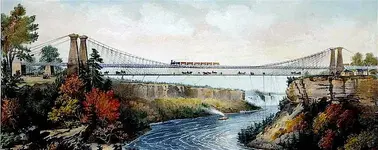 NYCRR Suspension Bridge.webp102.4 KB · Views: 90
NYCRR Suspension Bridge.webp102.4 KB · Views: 90
Last edited:
Upvote
34






